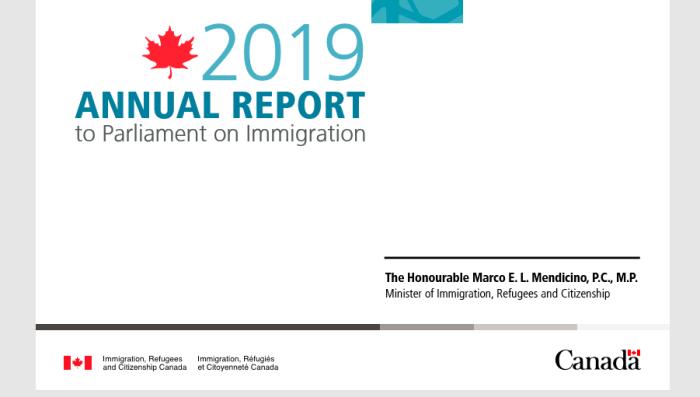
1. Mass LEGAL Immigration In Canada
Despite what many think, LEGAL immigration into Canada is actually a much larger threat than illegal aliens, given the true scale of the replacement that is happening. What was founded as a European (British) colony is becoming unrecognizable due to forced demographic changes. There are also social, economic, environmental and voting changes to consider. See this Canadian series, and the UN programs for more detail. Politicians, the media, and so-called “experts” have no interest in coming clean on this.
CLICK HERE, for UN Genocide Prevention/Punishment Convention.
CLICK HERE, for Barcelona Declaration & Kalergi Plan.
CLICK HERE, for UN Kalergi Plan (population replacement).
CLICK HERE, for UN replacement efforts since 1974.
CLICK HERE, for tracing steps of UN replacement agenda.
Note: If there are errors in calculating the totals, please speak up. Information is of no use to the public if it isn’t accurate.
2. Important Link
CLICK HERE, for Michelle Rempel’s take on immigration.
CLICK HERE, for sources of demographic replacement.
CLICK HERE, for Canada doesn’t track people exiting.
CLICK HERE, for World Bank & global remittances.
CLICK HERE, for remittances and brain drain.
CLICK HERE, for CANZUK, border erasure.
CLICK HERE, for economic immigration during high unemployment.
CLICK HERE, for UN Convention on Genocide.
CLICK HERE, for CPC policy declaration.
conservative.party.of.canada.policy.declaration
CLICK HERE, for Rempel tweet #1.
CLICK HERE, for Rempel tweet #2.
CLICK HERE, for Rempel tweet #3.
CLICK HERE, for Rempel tweet #4.
2004.annual.immigration.report.to.parliament
2005.annual.immigration.report.to.parliament
2006.annual.immigration.report.to.parliament
2007.annual.immigration.report.to.parliament
2008.annual.immigration.report.to.parliament
2009.annual.immigration.report.to.parliament
2010.annual.immigration.report.to.parliament
2011.annual.immigration.report.to.parliament
2012.annual.immigration.report.to.parliament
2013.annual.immigration.report.to.parliament
2014.annual.immigration.report.to.parliament
2015.annual.immigration.report.to.parliament
2016.annual.immigration.report.to.parliament
2017.annual.immigration.report.to.parliament
2018.annual.immigration.report.to.parliament
2019.annual.immigration.report.to.parliament
3. Total Numbers, Including “Temps”
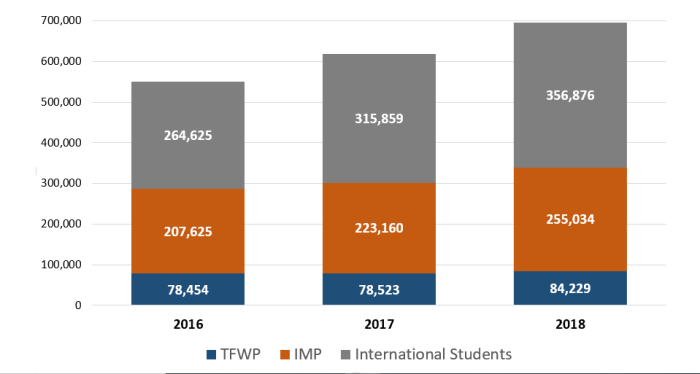
84,229 TFW permits issued
+ 255,034 International Mobility
+ 356,876 Student Visas
696,139 temporary migrants admitted in 2018
Also noted: there were 721,000+ international students (total) in Canada.
Over the past decade, the number of post-graduation work permit holders in Canada has increased from 95,455 in 2014 to 186,055 in 2018.
So, that is the “temporary migration”, nearly 700,000 people came into Canada on various student/temp worker visas. That’s a starting point. Now, how many people are coming through other streams? Disclaimer: Am not entirely sure on this, but will try to piece the totals together. It seems fairly convoluted.
Canada resettled 28,076 refugees (page 21 of the report). This is on top of the 45,758 refugees who became permanent residents,
321,035 PR handed out, of those:
- 49,504 refugees, protected people
- 85,179 family reunification
- 186,352 economic pathways
(From page 15 is states)
(a) 95,283 people who held a work permit became PR
(b) 53,805 who held a student visa became PR
So, then are we to assume that
321,035 PR handed out
-95,283 who held a work permit
-53,805 who held a student visa
171,947 new people brought in??
Or were some more people who had visas and then left? In fairness, a lot are likely counted as Provincial Nominees. Assuming (although it does not state explicitly) that those who held work or student visas previously were already in the country, it would mean that another 171,947 people entered and became permanent residents.
84,229 Temporary Foreign Workers
+ 255,034 International Mobility Program
+ 356,876 Student Visas
+ 171,947 (at least) economic/family/refugee
+ 28,076 (resettled) refugees
+ 40,000 (estimated) illegals
936,163 or more
Note: if there is an error in how this has been added up, please point it out. Accuracy is important.
But beyond the raw number of people entering Canada with potential to stay, there are many more things to factor in, and social costs to weigh.
4. Continued Population Replacement
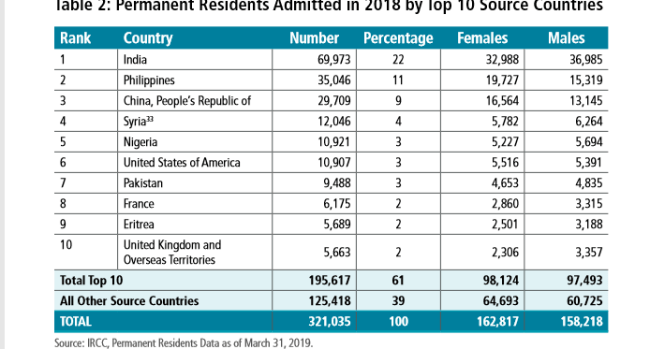
That is from page 36 of the 2019 Annual Report to Parliament on Immigration in Canada. The overwhelming majority of people entering (as usual) are from the 3rd world, and it keeps transforming Canada demographically. No, it is by no means everyone coming in, but just a snapshot of the group being granted permanent residence.
What’s frustrating is that politicians and the media refer to the PR totals, as if that was anywhere near representative of who was entering Canada. Since we don’t actually track who is leaving the country, we really have no idea how many people actually remain.
Now it that all the people coming? Do you really think that the hordes of students and “temporary” workers are going to leave afterwards?
Looking back in recent years:
(Page 18 of the 2004 Annual Report to Parliament)
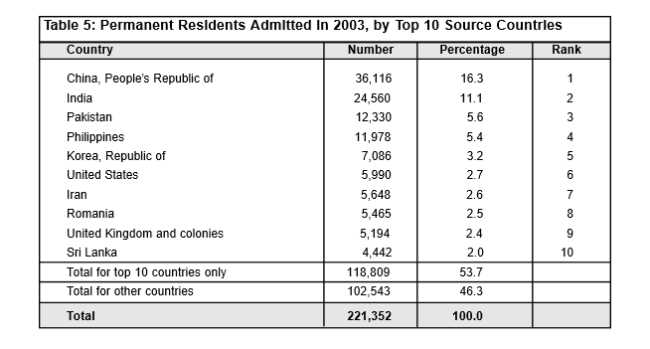

(Page 24 of the 2005 Annual Report to Parliament)

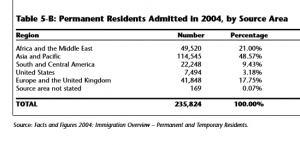
(Page 18, 19 of the 2006 Annual Report to Parliament)
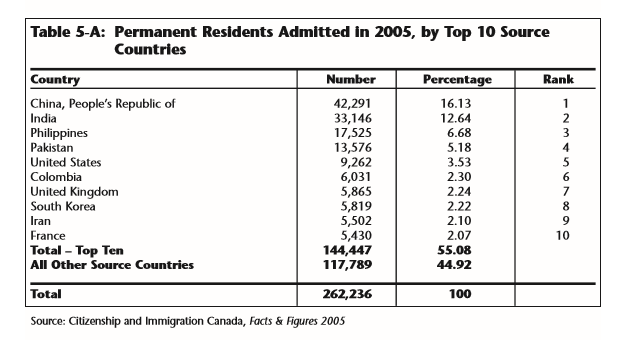

(Page 19, 20 of the 2007 Annual Report to Parliament)
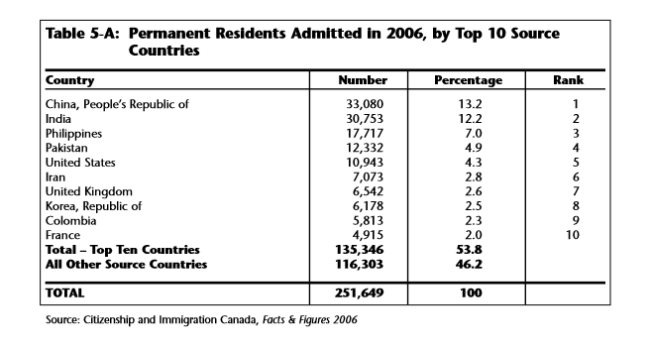
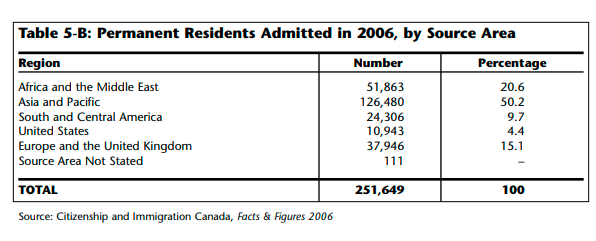
(Page 21, 22 of the 2008 Annual Report to Parliament)

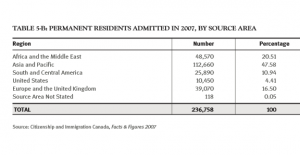
(Page 16 of the 2009 Annual Report to Parliament)
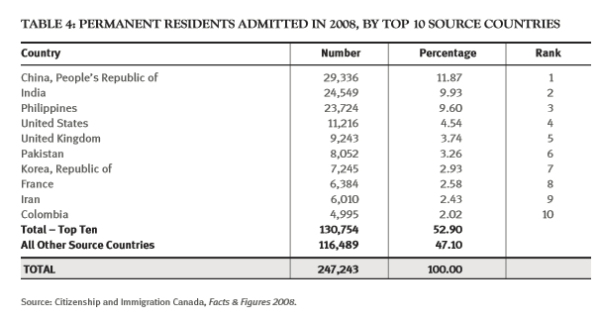
(Page 14 of the 2010 Annual Report to Parliament)
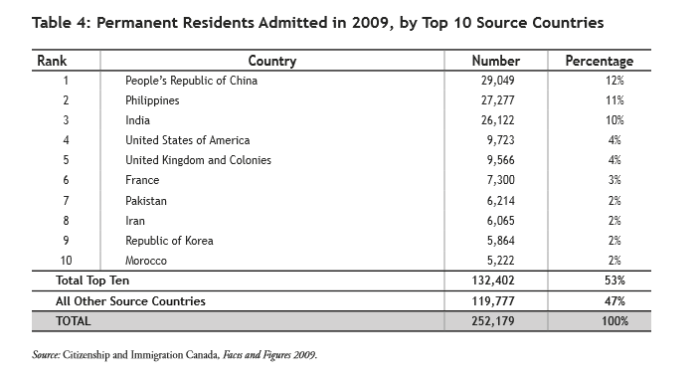
(Page 18 of the 2011 Annual Report to Parliament)
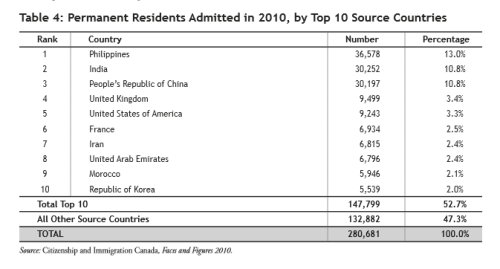
(Page 15 of the 2012 Annual Report to Parliament)
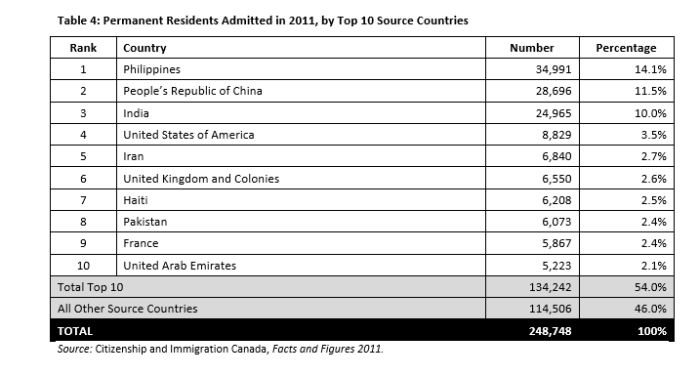
(Page 19 of the 2013 Annual Report to Parliament)
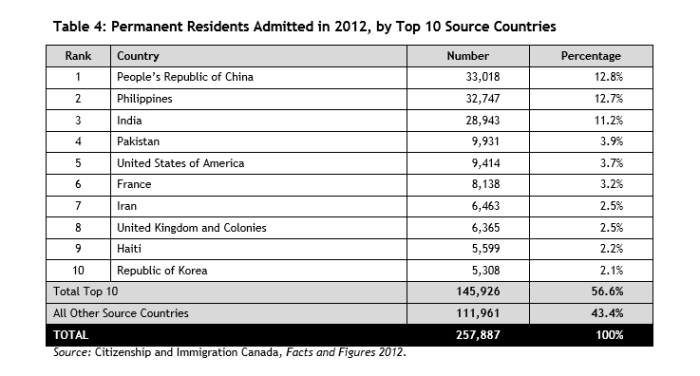
(Page 16 of the 2014 Annual Report to Parliament)
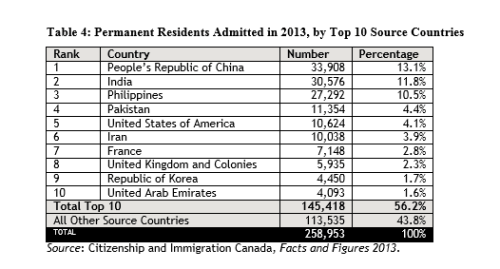
(Page 16 of the 2015 Annual Report to Parliament)
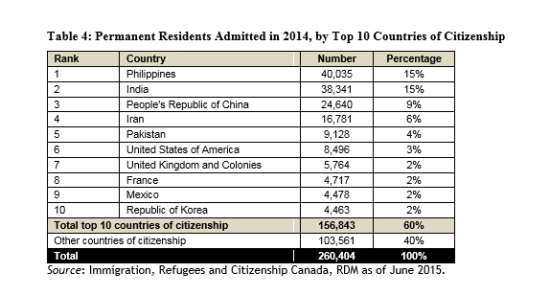
(Page 10 of the 2016 Annual Report to Parliament)
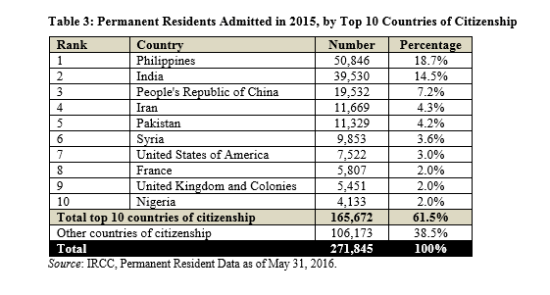
(Page 14 of the 2017 Annual Report to Parliament)

(Page 28 of the 2018 Annual Report to Parliament)
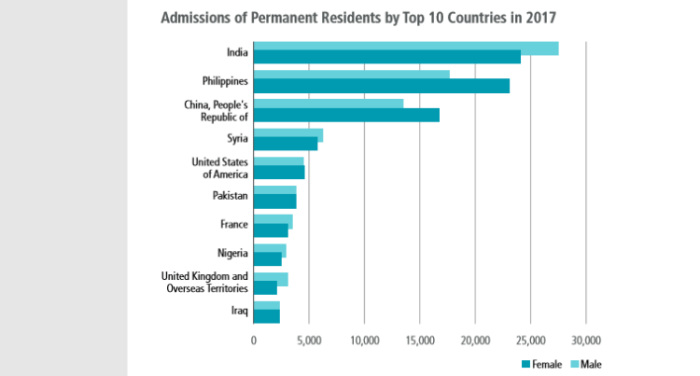
Did you think that importing large numbers of people from:
(a) China
(b) India
(c) Philippines
(d) Pakistan
(e) Iran
might be the reason we have such large enclaves of these groups? Think there may be some connection between them? This is not a single year, but a consistent pattern.
30-40% of new Permanent Residents are from just 3 countries (India, China, Philippines). Also, a lot are brought in from Muslim areas. Consider the UN Convention on preventing and punishing genocide.
Article I
The Contracting Parties confirm that genocide, whether committed in time of peace or in time of war, is a crime under international law which they undertake to prevent and to punish.
Article II
In the present Convention, genocide means any of the following acts committed with intent to destroy, in whole or in part, a national, ethnical, racial or religious group, as such:
(a) Killing members of the group;
(b) Causing serious bodily or mental harm to members of the group;
(c) Deliberately inflicting on the group conditions of life calculated to bring about its physical destruction in whole or in part;
(d) Imposing measures intended to prevent births within the group;
(e) Forcibly transferring children of the group to another group.
Under this declaration, forcibly pushing multiculturalism and population replacement should be considered genocide. And against another group, they would be. As for previous (and predicted) census data, on the European population in Canada:
1971: 96% European
2016: 72% European
2036: 50% European (projected)
2100: <20% European (projected)
In less than 150 years, Canada will have gone from 96% European to less than 20%. These are government predictions. This is white genocide.
5. Millions Of Visitors Came In 2018
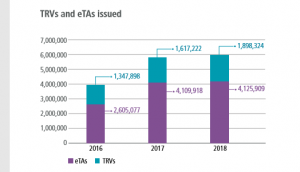
To be totally fair, the overwhelming majority of visitors to Canada (using Temporary Residence Visas and Electronic Travel Authorizations) likely caused no trouble in Canada and left when they were supposed to. Still 6 million people is an awful lot to have entered Canada in 2018.
6. More “Inadmissibles” Let Into Canada
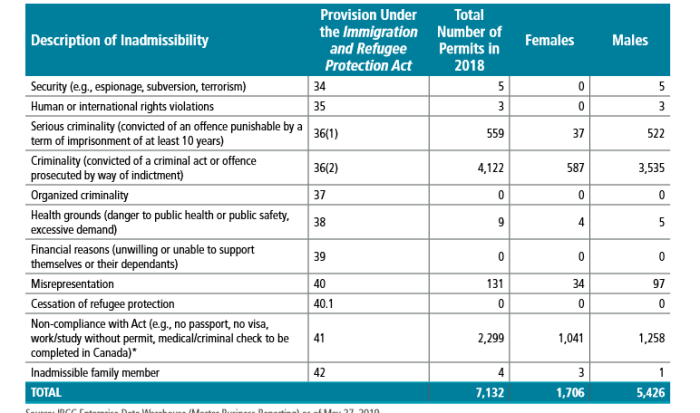
Broadly speaking, there are two provisions within IRPA, the Immigrant and Refugee Protection Act, that allow people who were previously deemed inadmissible to Canada to be given Temporary Resident Permits anyway. Here are the totals from the Annual Reports to Parliament on Immigration. Note: the first one listed only started in 2010.
| YEAR | TRP Issued |
|---|---|
| 2010 | 17 |
| 2011 | 53 |
| 2012 | 53 |
| 2013 | 280 |
| 2014 | 385 |
| 2015 | 1,063 |
| 2016 | 596 |
| 2017 | 555 |
| 2018 | 669 |
From 2010 to 2018, a total of 3671 people who were otherwise inadmissible to Canada were allowed in anyway under Rule 25.2(1) of IRPA. This is the category that Global News previously reported on. As for the other one, under Rule 24(1) of IRPA, Global News leaves that out:
| Year | Permits | Cumulative |
|---|---|---|
| 2002 | 12,630 | 12,630 |
| 2003 | 12,069 | 24,699 |
| 2004 | 13,598 | 38,297 |
| 2005 | 13,970 | 52,267 |
| 2006 | 13,412 | 65,679 |
| 2007 | 13,244 | 78,923 |
| 2008 | 12,821 | 91,744 |
| 2009 | 15,640 | 107,384 |
| 2010 | 12,452 | 119,836 |
| 2011 | 11,526 | 131,362 |
| 2012 | 13,564 | 144,926 |
| 2013 | 13,115 | 158,041 |
| 2014 | 10,624 | 168,665 |
| 2015 | 10,333 | 178,998 |
| 2016 | 10,568 | 189,566 |
| 2017 | 9,221 | 198,787 |
| 2018 | 7,132 | 205,919 |
From 2002 to 2018 (inclusive), a total of 205,919 people previously deemed inadmissible to Canada were given Temporary Resident Permits anyway. This has almost certainly been going on for a lot longer, but is as far back as the reports go. Now let’s consider the reasons these people are initially refused entry.
SEC = Security (espionage, subversion, terrorism)
HRV = Human or International Rights Violations
CRIM = Criminal
S.CRIM = Serious Criminal
NC = Non Compliance
MR = Misrepresentation
| YEAR | Total | SEC | HRV | Crim | S.Crim | NC | MR |
|---|---|---|---|---|---|---|---|
| 2002 | 12,630 | ? | ? | ? | ? | ? | ? |
| 2003 | 12,069 | 17 | 25 | 5,530 | 869 | 4,855 | 39 |
| 2004 | 13,598 | 12 | 12 | 7,096 | 953 | 4,981 | 20 |
| 2005 | 13,970 | 27 | 15 | 7,917 | 981 | 4,635 | 21 |
| 2006 | 13,412 | 29 | 20 | 7,421 | 982 | 4,387 | 18 |
| 2007 | 13,244 | 25 | 8 | 7,539 | 977 | 4,109 | 14 |
| 2008 | 12,821 | 73 | 18 | 7,108 | 898 | 4,170 | 17 |
| 2009 | 15,640 | 32 | 23 | 6,619 | 880 | 7,512 | 10 |
| 2010 | 12,452 | 86 | 24 | 6,451 | 907 | 4,423 | 36 |
| 2011 | 11,526 | 37 | 14 | 6,227 | 899 | 3,932 | 11 |
| 2012 | 13,564 | 20 | 15 | 7,014 | 888 | 5,206 | 18 |
| 2013 | 13,115 | 17 | 10 | 6,816 | 843 | 5,135 | 8 |
| 2014 | 10,624 | 12 | 2 | 5,807 | 716 | 3,895 | 14 |
| 2015 | 10,333 | 3 | 3 | 5,305 | 578 | 4,315 | 28 |
| 2016 | 10,568 | 8 | 4 | 4,509 | 534 | 2,788 | 20 |
| 2017 | 9,221 | 10 | 5 | 5,035 | 591 | 3,412 | 121 |
| 2018 | 7,132 | 5 | 3 | 4,132 | 559 | 2,299 | 131 |
The original work for this section was done back in December 2019, but the findings as just as valid today.
7. Students & Temporary Workers
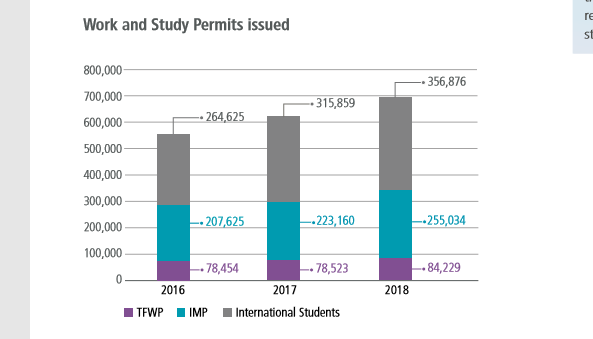
Canada’s International Student Program has also seen great demand in recent years . Canada’s standing as a destination of choice for international students has improved in the past few years, ranking in the top 4 international study destinations in 2018, up from seventh place in 2015. In 2018, there were more than 721,000 international students with valid study permits in Canada at all levels of study. Of this total, over 356,000 study permits were issued to international students in 2018, up 13% from 2017 . The increases in the number of post-secondary international students to Canada since 2008 represents relatively rapid growth as compared with other OECD countries
Moreover, 53,805 individuals who ever held a study permit in Canada were admitted as permanent residents, a 20% increase from 2017. Of these, 10,949 held their study permit in 2018, with the majority entering as economic immigrants.
The above passages are from page 7 of the 2019 report. Now, for a look at it since 2003:
| Year | Stu | TFWP | IMP | Total | |
|---|---|---|---|---|---|
| 2003 | 61,293 | 82,151 | – | 143,444 | |
| 2004 | 56,536 | 90,668 | – | 147,204 | |
| 2005 | 57,476 | 99,146 | – | 156,622 | |
| 2006 | 61,703 | 112,658 | – | 174,361 | |
| 2007 | 64,636 | 165,198 | – | 229,834 | |
| 2008 | 79,509 | 192,519 | – | 272,028 | |
| 2009 | 85,140 | 178,478 | – | 263,618 | |
| 2010 | 96,157 | 182,276 | – | 278,433 | |
| 2011 | 98,383 | 190,842 | – | 289,225 | |
| 2012 | 104,810 | 213,573 | – | 318,383 | |
| 2013 | 111,865 | 221,310 | – | 333,175 | |
| 2014 | 127,698 | 95,086 | 197,924 | 420,078 | |
| 2015 | 219,143 | 73,016 | 175,967 | 468,126 | |
| 2016 | 265,111 | 78,402 | 207,829 | 551,342 | |
| 2017 | 317,328 | 78,788 | 224,033 | 620,149 | |
| 2018 | 356,876 | 84,229 | 255,034 | 696,139 |
For some context: Canada went from admitting 60,000 student visas in 2003 to almost 360,000 in 2018. That is nearly 6 times as large over a 15 year span. Additionally, we went from about 80,000 temporary work visas in 2003 to over 320,000 (TFWP and IMP combined) in 2018.
8. Costs Of Illegal Aliens Via Roxham
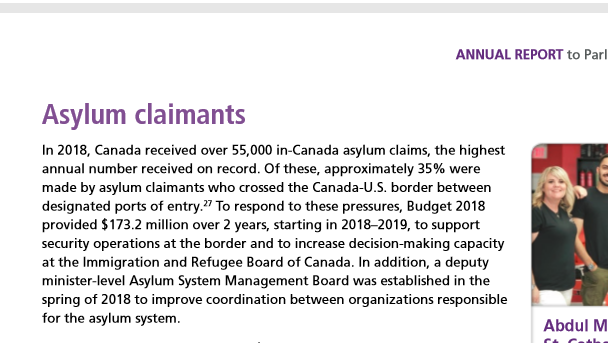
In 2018, Canada received over 55,000 in-Canada asylum claims, the highest annual number received on record . Of these, approximately 35% were made by asylum claimants who crossed the Canada-U.S. border between designated ports of entry. To respond to these pressures, Budget 2018 provided $173.2 million over 2 years, starting in 2018–2019, to support security operations at the border and to increase decision-making capacity at the Immigration and Refugee Board of Canada. In addition, a deputy minister-level Asylum System Management Board was established in the spring of 2018 to improve coordination between organizations responsible for the asylum system.
Recognizing that provinces have faced pressures associated with the influx of irregular migrants, on June 1, 2018, the Government of Canada pledged an initial $50 million to assist the provinces that have borne the majority of costs associated with the increase in asylum claimants. This was followed by the establishment of the Interim Housing Assistance Program in early 2019, to support provinces and, if necessary, municipalities that incurred extraordinary interim housing costs in 2017 through 2019. As of September 2019, the government has provided provinces and municipalities with over $370 million to address pressures resulting from the increase in asylum claims. Maintaining border integrity, ensuring public safety and security, and treating asylum claimants with dignity and compassion continue to be key guiding principles for the Government of Canada.
Page 23 of the report gives some information about the costs that illegal aliens (fake refugees) are incurring on Canadians. This of course is in addition to the loss of sovereignty, danger to society, and watering down of our culture and heritage.
9. Workers Being Replaced By Foreigners

In 2018, the top 5 invited occupations were: software engineers and designers, information systems analysts and consultants, computer programmers and interactive media developers, financial auditors and accountants, and administrative assistants, Also in 2018, Canada admitted more than 92,000 new permanent residents through the Express Entry system, an increase of 41% over 2017
That is from page 8 of the report. Considering how man STEM graduates struggle to find work in their field, flooding the country with more of these workers makes it even harder. There should be other considerations besides simply the bottom line.
10. Wages Being Depressed
If poverty is increasing, and wages are going down, I don’t know why we need millions of people to be coming into this country as guest workers who’ll work for lower wages than American workers, and drive wages down even lower than they already are.
This video is from 2007. Bernie Sanders told Lou Dobbs that mass economic immigration leads to wages being driven down. There is nothing humanitarian about this, but rather about importing cheap foreign labour. However, since running for President, he has completely reversed himself.
This happens in Canada and elsewhere as well. Wages are a large part related to supply and demand. If you jack up the supply of something, its relative value drops. Programs like the Temporary Foreign Worker Program and the International Mobility Program flood Canada with cheap labour. The same is true with letting international students work while in school. It further adds to the supply.
Not only are wages stagnant or depressed, but the surplus labour means that Canadian citizens will have a harder time finding work. However, business interests will love it.
Also, to address the elephant in the room, these aren’t necessarily “temporary” migrants, as an awful lot of them will stay in Canada.
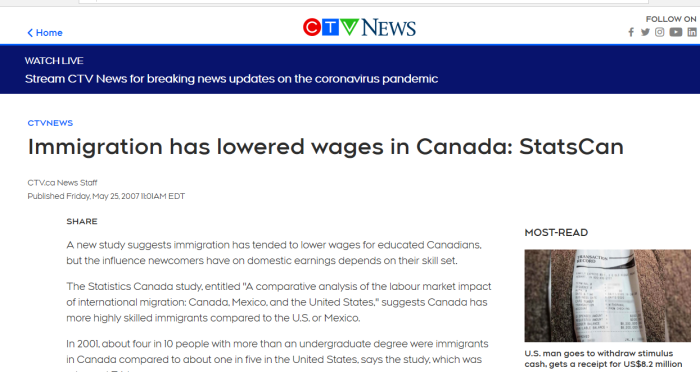
Even CTV News, was willing to address the issue, at least in 2007.
11. Remittances Sent Abroad
(Statistics Canada actually estimates this stuff)

(Who says the Government isn’t good for anything?)
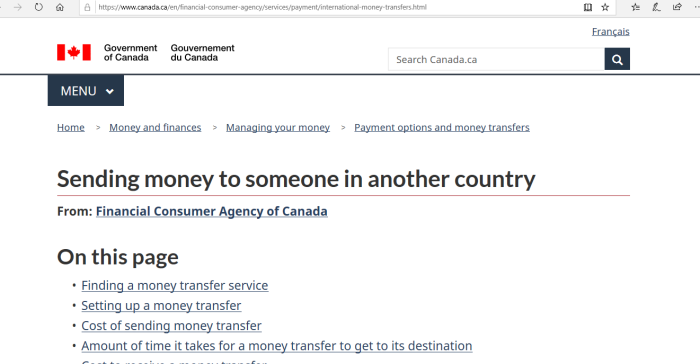
| Year | Total ($B) | To 1st World | To 3rd World | Diff. |
|---|---|---|---|---|
| 2013 | $581B | $177B | $404B | $227B |
| 2014 | $592B | $162B | $430B | $268B |
| 2015 | $582B | $142B | $440B | $298B |
| 2016 | $573B | $144B | $429B | $285B |
| 2017 | $613B | $147B | $466B | $319B |
| 2018 | $689B | $161B | $528B | $367B |
Sources For The Chart
CLICK HERE, for World Bank, remittances in 2013.
CLICK HERE, for World Bank, remittances in 2015.
CLICK HERE, for World Bank, remittances in 2016.
CLICK HERE, for World Bank, remittances in 2017.
CLICK HERE, for World Bank, remittances in 2018.
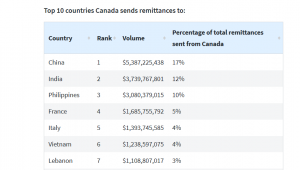
As for Canada specifically, there is this finder.com/ca posting which estimates that $30 billion was sent out of Canada in 2017 as remittances. We are always told that immigration strengthens the economy. Yet when tens of billions are shipped abroad annually, it blows a hole in that theory.
12. Economic Value Over Social Cohesion
Page 5 of the report goes on about how diversity makes the country stronger, and that economic value is what the Canadian Immigration system should focus on.
Canada has long benefited from immigration and continues to welcome newcomers for economic, social and humanitarian reasons. While immigration to Canada benefits the country by filling in gaps in the labour market and boosting many sectors of the economy, our immigration system also fosters the reunification of families and provides protection to those at risk, including through the resettlement of refugees from outside Canada. In addition, our immigration system helps maintain the size of the working age population at a time when Canada’s overall population is aging and the need for skilled talent is increasing. Immigration works to counter these challenges, while enriching the social fabric of Canada.
Forget having bigger families. The way to maintain your working population is to import a replacement population, mainly from the 3rd world. What can possibly go wrong?
(From page 12 of the report, it continues….)
The global environment is evolving more rapidly than ever, introducing potentially significant changes to the labour market, from the way people work to the types of skills in demand and the integration of new technologies . Canada’s future economic success will depend, in part, on an immigration system that helps ensure that people with the right skills are in the right place, at the right time, to meet evolving labour market needs. Moreover, for immigration to be a continuing success, Canada’s approach will have to address factors such as labour market requirements, the impacts of automation, as well as region- and sector-specific needs. Given this, Canada is working to ensure that an evidence-based understanding of evolving labour market needs informs its approach to immigration.
Immigration has strengthened, and will continue to strengthen Canada as it helps to keep our country globally competitive by promoting innovation and economic growth through its support of diverse and inclusive communities.
What about an economic system that maintains the cultural and demographic makeup up the nation? How is a commitment to diversity a good thing when it leads to the fracturing of society? All that these people care about is money, and virtue signalling.
13. Canada Still Not Tracking Exits By Air
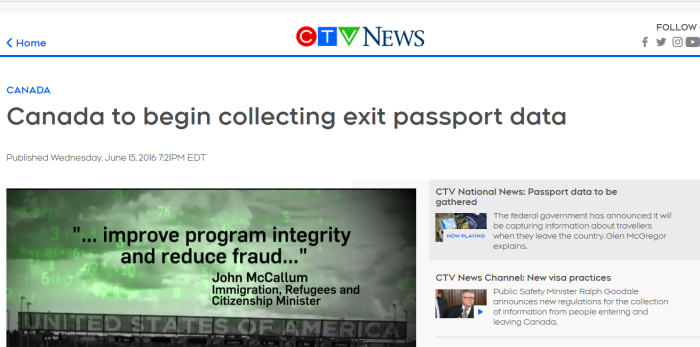
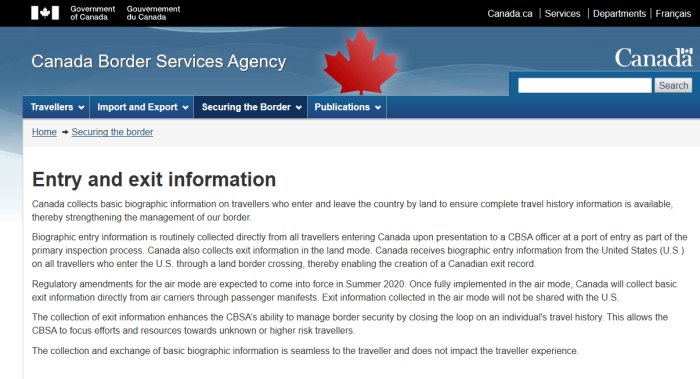
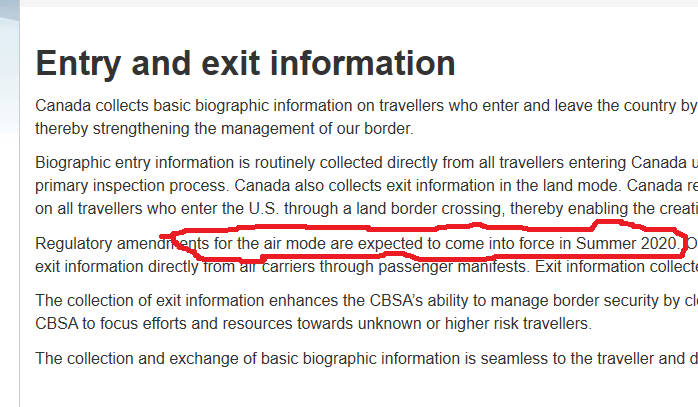
What really helps skew the data is the fact that Canada still does not have an entry/exit tracking system in place. We do keep exit records for people leaving for the U.S. but not flights to other countries. Consequently, we have no idea how many people illegally overstay their allotted time in Canada.
Despite a pledge in 2016, Trudeau still hasn’t fully implemented the system 4 years later. He’s clearly not serious about border security. But to be fair, successive Conservative Governments haven’t seen fit to do it either.
14. Conservative Inc. Supports Status Quo
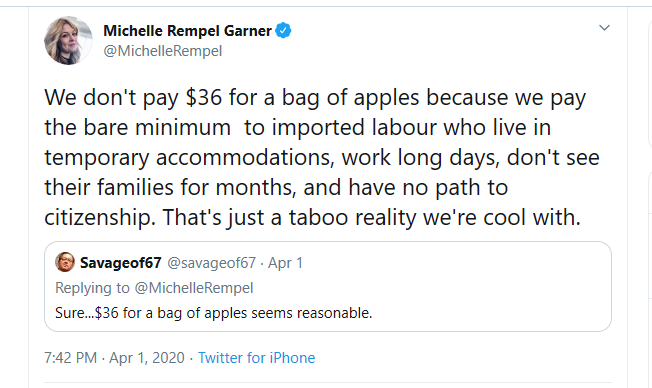
Not entirely sure why Rempel would lie about something so easy to factcheck. Of course the TFWP is a potential pathway to permanent residence. Perhaps she knows few people will call her out on it.

Consider this for a moment: Michelle Rempel nearly became Immigration Minister. She supports putting Canadians to work in agriculture ONLY if it’s not possible to import a foreign work force. Nice to see a conservative finally being honest about this though.

It’s nice (in some sense) to see Rempel come out and admit that these “temporary” workers are in fact driving wages down, but she seems to support the idea.
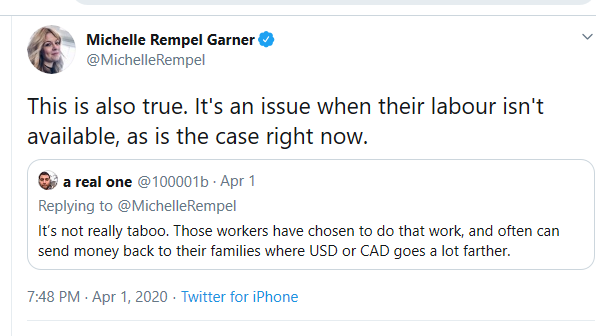
Yes, temporary workers in Canada (and other Western nations) will often send money back home? But it’s no big deal, right? It won’t have any harmful effect? Perhaps not.
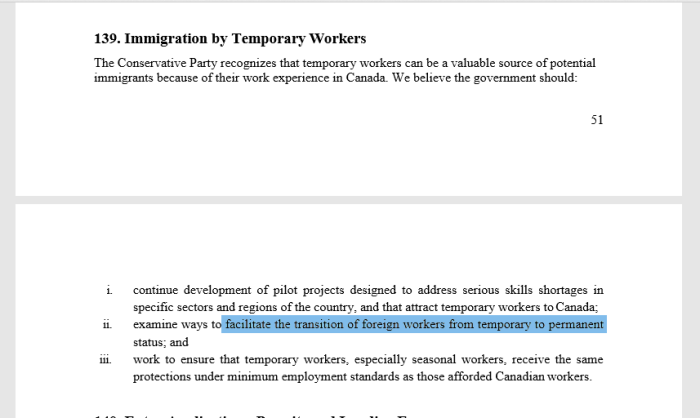
Article 139 of the CPC Policy Declaration is to convert temporary workers to permanent residents where possible. Rempel, as Immigration “Shadow Minister” or “Critic” presumably would have known that.
Beyond supporting mass migration, “Conservative Inc.” also supports partially erasing the Canadian border. CANZUK, as shown here, is the official CPC platform, in article 152.
15. Moratorium Needs To Be Seriously Discussed
Given all of the information available, a very serious public discussion needs to be had on putting a moratorium on immigration in Canada. This means we should talk about shutting it down completely, at least for a while.
In 2018, nearly 700,000 people came to Canada (or 696,132 to be exact), under student visas, and temporary work visas. While many will leave, an awful lot won’t. Yet these groups aren’t part of the discussion. When other categories are factored in, it is at least 900,000 people, and likely more.
Immigration in Canada is talked about in terms of the number of permanent residencies at a time, not how many people are actually entering. It distorts and obfuscates the real numbers. It’s also likely why there are large backlogs in applications.
Diversity is praised, and any expressed want for demographic and cultural stability is seen as bigotry. But there is nothing wrong with wanting to preserve our society as it is. It needs to be said: ethnicity, culture, heritage, language, religion and customs are what bond people. It is a common IDENTITY unites us, not abstract values and ideas.
Aside from virtue signalling, the focus in on the financial benefits employers and corporations can get. Flooding Canada with a surplus of labour drives down wages and forces extra competition on Canadian youth and graduates. Of course, these are the same people who support globalized trade (offshoring) of industries. This double tap results in INCREASED DEMAND for jobs and work, with a DECREASED SUPPLY. This leads to stagnant, and even declining wages.
Despite all the praise heaped for immigration growing the economy, remittances is a topic that rarely gets discussed. Tens of billions of dollars is sent abroad annually, typically to family members. How does that make us wealthier?
Since an entry/exit system is not fully implemented, we really have no way of knowing how many people are overstaying their welcome and remain here illegally.
Conservative Inc. — globalists who pretend to care about these topics — differ little than liberals. Those differences are mostly just rhetorical and meant for grandstanding.
